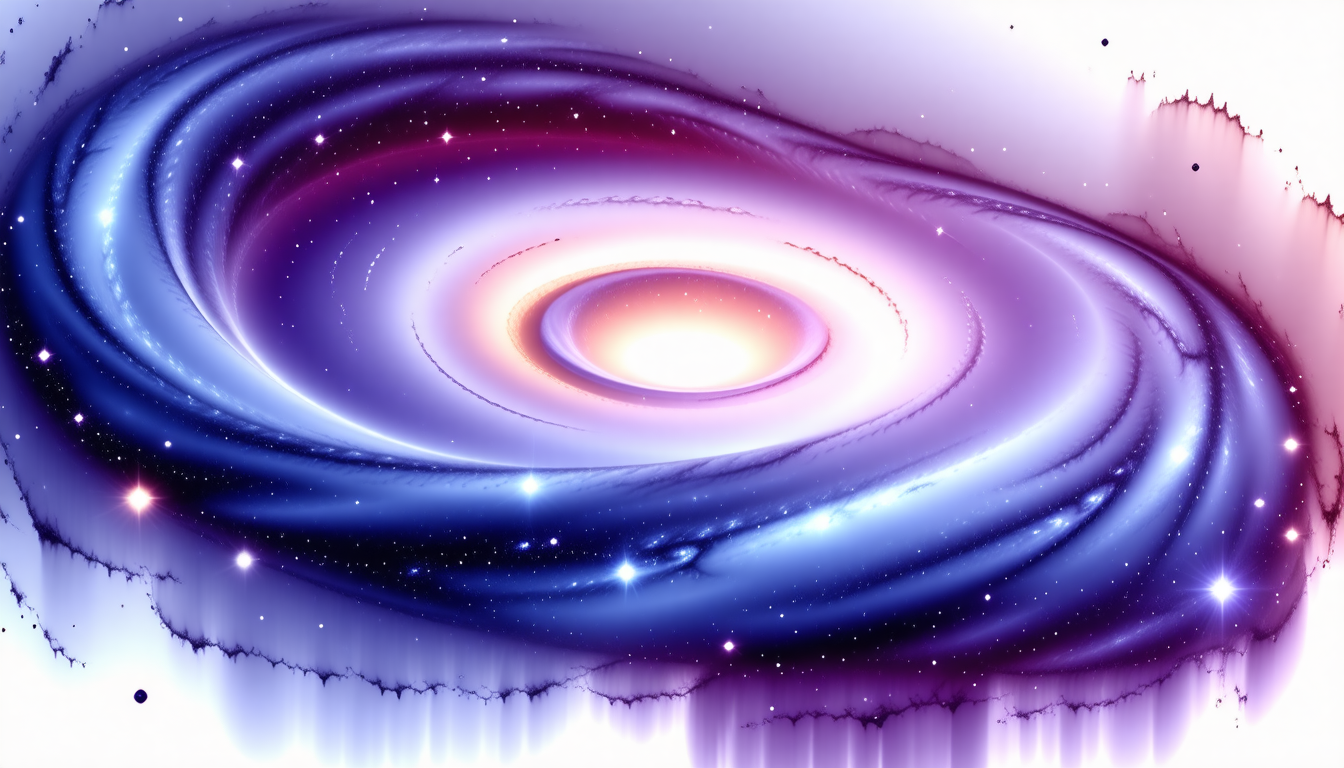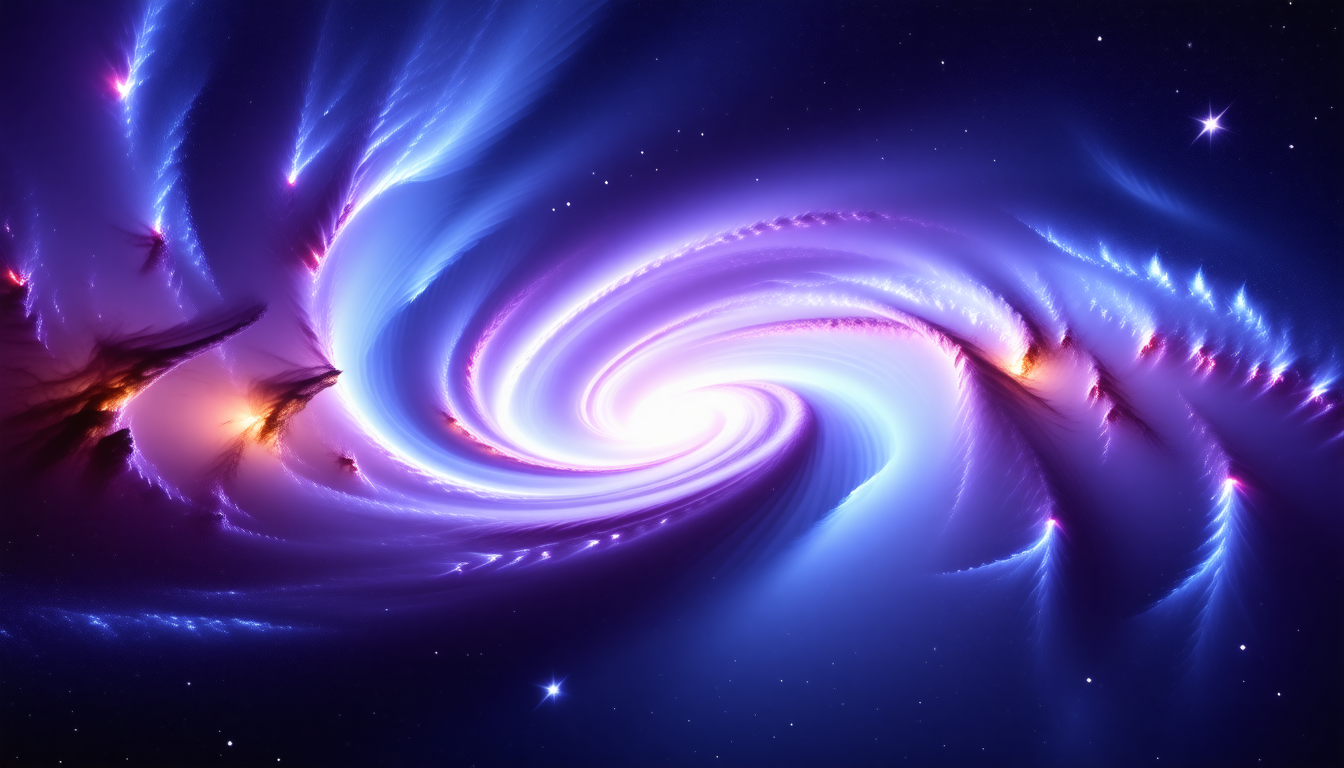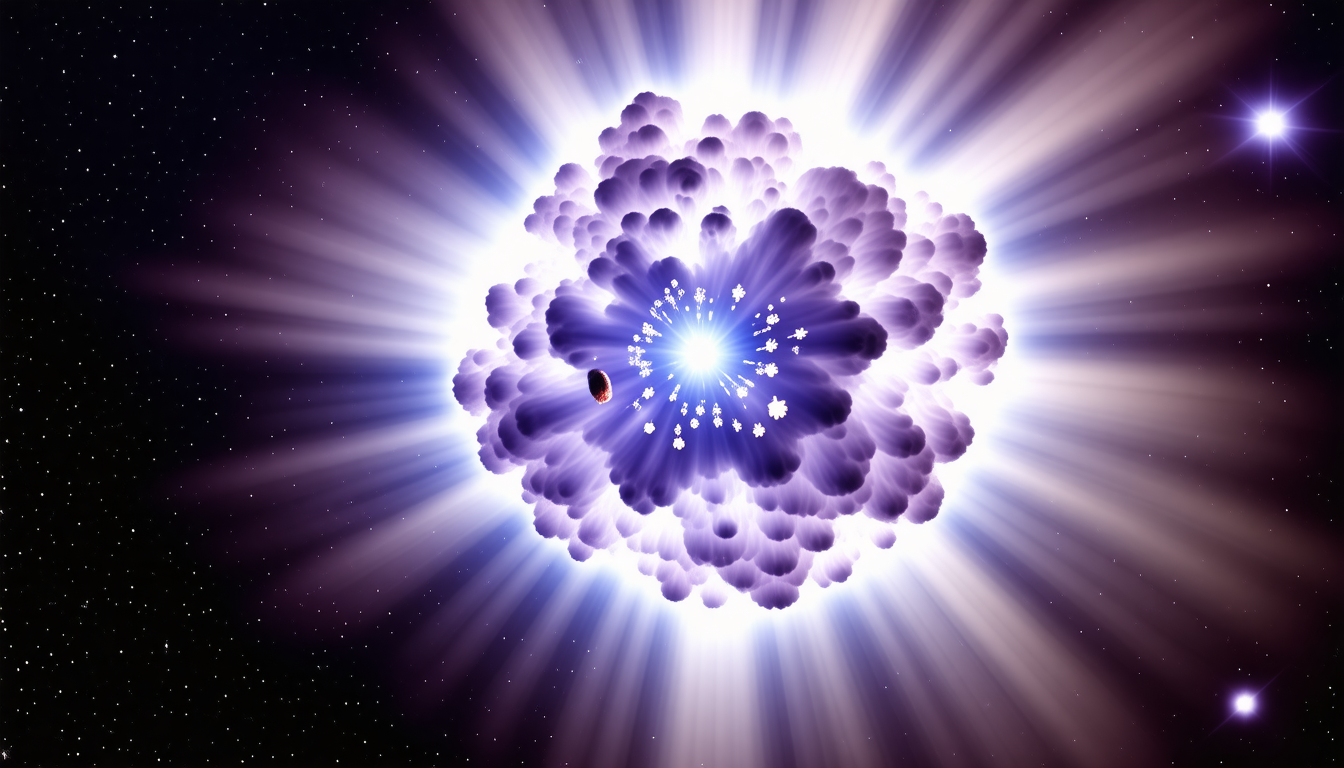Cosmic Quest: Unraveling the Universe’s Deepest Secrets

Unveiling the Mysteries of the Universe
Imagine a force so immense that it pulls entire galaxies toward it yet remains unseen, lurking in the depths of the cosmos. That’s just one of the mind-bending phenomena that shape our universe. From galactic collisions that illustrate the chaotic dance of celestial bodies to the brilliant explosions of supernovae that forge the very elements of life, the cosmos is alive with events that challenge our understanding.
One of the most intriguing cosmic enigmas is the Great Attractor, located approximately 200 million light years away from Earth, hidden behind dense fields of stars, gas, and cosmic dust. It’s a massive gravitational anomaly believed to be at the heart of a colossal concentration of matter—a cluster of galaxies and dark matter—that impacts the movement of nearby galaxies, including our Milky Way. Its gravitational influence is akin to a whirlpool in a vast cosmic ocean, pulling our galaxy and its neighbors into its depths. This interconnectedness between galaxies demonstrates how expansive and dynamic our cosmos truly is.
As we delve deeper into the great unknown, the mysteries surrounding the Great Attractor serve as a reminder of the complexities of our universe. While we experience its gravitational tug, our vantage point complicates direct observations and understanding. The intricate web of cosmic interactions and structures continues to evolve, revealing just how little we know. Research into such areas represents a quest for knowledge, pushing the boundaries of our scientific explorations.
The implications of gravitational forces at play stretch far beyond our understanding of a single galaxy. Each movement, each collision, contributes to galactic evolution. The interplay between gravity and other cosmic phenomena impacts how galaxies fuse together and reconfigure their structures over time. When galaxies collide, they engage in a sophisticated gravitational dance, often leading to new star formations. The gas and dust, compressed together during these encounters, can ignite the birth of countless new stars, reshaping the cosmic landscape.
As we observe the behavior of the galaxies around us, we begin to understand how the forces of gravity govern the cosmos at a grand scale. The Great Attractor is intertwined with other cosmic structures, like the Laniakea Supercluster—encompassing about 100,000 galaxies—showing how interconnected and dynamic the universe is. Our continual movement through space is part of a larger cosmic ballet influenced by the gravitational forces of these extensive structures, demonstrating that we are not alone but rather part of a collective journey through the universe.
The challenges posed by the Great Attractor and other gravitational phenomena fuel inquiries into the nature of dark matter and dark energy—two elusive components that make up a significant portion of the universe. Dark matter, which does not emit light or energy, helps shape the structure of galaxies and clusters, while dark energy acts as a counterforce to gravity, driving the acceleration of the universe’s expansion. Understanding these forces is essential for grasping not only how galaxies evolve but also the ultimate fate of the cosmos.
With advancements in technology, astronomers are now equipped with powerful instruments, such as the James Webb Space Telescope, that allow us to probe these hidden realms of the universe. These observational tools will aid in deciphering the intricate details of cosmic motions and dark matter’s gravitational influences on neighboring galaxies. The ongoing quest to uncover the secrets held within these cosmic anomalies inspires us to consider about our place within the universe, pushing scientists to explore what lies beyond the familiar horizons of the known.
As we continue this journey of discovery, it becomes increasingly clear that the mysteries of the universe are complex and interwoven. By investigating structures like the Great Attractor, astronomers unlock insights into the cosmic fabric that binds galaxies together while at the same time pondering the fundamental questions of existence. The cosmos isn’t just a vast expanse of stars; it is a dynamic interplay of forces that continually shape our understanding of reality.

The Role of Dark Energy and Cosmic Phenomena
The cosmos is marked by enigmatic forces that influence the structure and behavior of galaxies, and dark energy stands as one of the most compelling mysteries in this intricate web. Estimated to account for approximately 70% of the universe’s total energy density, dark energy drives the accelerated expansion of the universe, shaping the ultimate fate of all cosmic entities. This unseen force operates in stark contrast to gravity, which draws matter together. Instead, dark energy acts as a counterbalancing force, pushing galaxies apart and creating an environment where expansion is not only continuous but accelerating.
Understanding the implications of dark energy requires a multifaceted approach. Observations of distant supernovae, particularly Type Ia supernovae, have provided critical insights into this phenomenon. These stellar explosions serve as standard candles in astrophysics due to their consistent luminosity, enabling scientists to gauge distances across vast stretches of space. By examining the brightness of these supernovae and their redshift, researchers can infer how quickly the universe is expanding, leading to groundbreaking conclusions about the influence of dark energy on cosmic evolution.
Dark energy’s impact goes beyond mere expansion; it suggests a dynamic framework for understanding the large-scale structure of the universe. The interplay between dark energy and gravitational forces informs scientists about how galaxies cluster and evolve over time. As dark energy pushes against gravitational attractions, it shapes the cosmic web—a complex tapestry where matter is distributed unevenly, resulting in vast voids alongside densely populated clusters. This gravitational dance raises profound questions about the nature of dark energy itself: Is it a constant property of the universe, or does it evolve? Might it one day change behavior, influencing the cosmic structure in unforeseen ways?
Recent advancements in observational technology have provided astronomers with powerful tools to investigate these questions further. The deployment of satellite missions, such as the European Space Agency’s Euclid and NASA’s Wide Field Infrared Survey Telescope (WFIRST), is expected to enhance our understanding of cosmic expansion and dark energy’s role within it. These missions will map the distribution of galaxies and measure how their light shifts as the universe expands, helping scientists to refine their models of cosmic growth.
Moreover, the study of the cosmic microwave background (CMB), a remnant of the Big Bang, offers additional clues regarding the universe’s early conditions and its subsequent evolution. Analyzing the slight temperature fluctuations in the CMB allows researchers to gain insights into the composition of the universe, including estimates of dark matter and dark energy. These snapshots of the universe’s infancy set the stage for understanding how these components interact and influence the trajectory of cosmic events.
In the grand tapestry of the cosmos, dark energy’s role invites contemplation of not just physical realities but also philosophical questions. What does it mean for our existence if the universe is destined to continue expanding into an increasingly cold and desolate future? The possibility of an endless cosmic expansion suggests a future devoid of the stars and galaxies that currently populate our night sky. As we grapple with these ideas, we are reminded of the delicate balance between creation and decay, a fundamental aspect of the universe’s evolutionary process.
As we journey deeper into the mysteries surrounding dark energy, we encounter opportunities and challenges that will shape the future of cosmology. The relentless pursuit of understanding this enigmatic force propels scientific inquiry, fostering an environment ripe for collaboration and innovation. Each new discovery brings us closer to unveiling the truth behind dark energy, challenging our perceptions while illuminating the path forward. Ultimately, our quest to understand cosmic phenomena will continue, deepening our appreciation for the universe and our place within its vast expanse.

The Future of Space Exploration and Exoplanet Discovery
The future of space exploration and exoplanet discovery invites us into a thrilling frontier, where scientific curiosity, technological innovation, and the possibility of encountering extraterrestrial life intersect. As we expand our cosmic horizons, the ambition to uncover distant worlds within our galaxy has never been more pronounced. This endeavor is not merely a search for life as we know it; it is a quest to understand the fundamental processes that govern planetary formation and the conditions for habitability.
Advanced telescopes, such as the James Webb Space Telescope, represent the cutting edge of this exploration. Webb’s powerful infrared capabilities will allow astronomers to peer through cosmic dust and gas, uncovering previously obscured celestial objects. This includes identifying exoplanets in the habitable zones of their stars—regions where conditions may be just right for liquid water to exist. Understanding the composition and dynamics of their atmospheres will provide critical insights into their habitability, paving the way toward discovering whether these distant worlds could harbor life.
Furthermore, the transit method, which measures the slight dimming of a star as a planet passes in front of it, augmented by the radial velocity method, continues to yield robust data on the size and density of exoplanets. As detection methods improve, we can differentiate between rocky, terrestrial-like worlds and massive gas giants, refining our understanding of what makes a planet potentially habitable. But the quest does not stop there; spectroscopic analysis of starlight filtering through exoplanetary atmospheres can reveal a wealth of information about the presence of gases that may indicate biological activity, such as oxygen and methane. This opens the door to a deeper understanding of the conditions that support life beyond Earth.
The relentless push for discovery also encourages international cooperation and collaboration in the field of space exploration. With agencies like NASA, ESA (European Space Agency), and a high number of private companies working together, a unified front emerges, equipped to tackle the vast challenges involved in seeking out extraterrestrial life. The pooling of resources, knowledge, and technology propels us further into the cosmos, fostering an environment ripe for discovery while asserting a collective human interest in understanding our place in the vast universe.
Nonetheless, the future of exoplanet research is not without its challenges. For instance, the task of identifying Earth-like planets will require a nuanced approach, as conditions that support life may vary greatly from what we experience here on our home planet. The discovery of extreme environments on exoplanets, previously thought to be inhospitable, has begun to reshape our understanding of life’s potential adaptability. Exoplanets orbiting red dwarf stars, for example, may experience intense radiation levels but could also possess conditions that allow for unique forms of life to evolve.
As technology continues to advance, the methodology employed in searching for exoplanets is likely to evolve exponentially. The advent of direct imaging techniques will permit a photographic glimpse of distant exoplanets, allowing scientists to analyze their characteristics more deeply. Meanwhile, machine learning and artificial intelligence tools are starting to play a pivotal role in interpreting the colossal datasets generated from various observational campaigns, enhancing the efficiency of the search for alien worlds.
The potential discovery of life beyond Earth ignites fascinating philosophical discussions about our existence. What will it mean for humanity if we find that we are not alone in the universe? How will such a discovery affect our understanding of ourselves and our role within the cosmos? As we ponder these existential questions, the connection between cosmic events—like the evolution and death of stars, supernovae enriching the intergalactic medium, and the birth of new planetary systems—reminds us of the interconnectedness of all things in the universe.
As we stand on the brink of an era of remarkable discoveries in space exploration and exoplanet research, the future is filled with potential. The unfolding narrative of our pursuit not only has the capacity to redefine scientific knowledge but also to unify humanity in a shared mission of exploration. Together, we gaze into the cosmos with wonder and eagerness, hungry for answers, with the hope that every discovery will bring us one step closer to understanding our universe and our place within it.